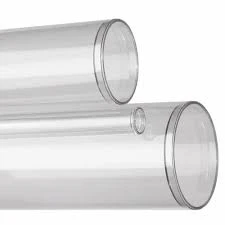නොවැ. . 07, 2024 22:48 Back to list
High-Density Polyethylene Drip Irrigation Pipe for Efficient Water Distribution
Understanding HDPE Drip Pipes A Sustainable Solution for Efficient Irrigation
In the ever-evolving field of agriculture, efficient water management is a critical challenge. Farmers and agriculturalists are continually seeking innovative solutions to maximize water usage while minimizing waste. One such solution that has gained significant traction is High-Density Polyethylene (HDPE) drip pipes. This technology not only enhances irrigation efficiency but also promotes sustainable agricultural practices.
Understanding HDPE Drip Pipes A Sustainable Solution for Efficient Irrigation
One of the most significant benefits of HDPE drip irrigation is its water efficiency. Traditional irrigation methods, such as flood or sprinkler systems, often lead to substantial water loss due to evaporation and runoff. In contrast, drip irrigation delivers water directly to the roots of plants through a network of tubing and emitters, ensuring that every drop counts. This localized water delivery not only conserves water but also enhances crop yields by providing a consistent moisture level that promotes healthy growth.
hdpe drip pipe

Moreover, the use of HDPE for drip pipes contributes to sustainability in farming. As the global population continues to grow, the demand for food increases, putting pressure on water resources. By implementing HDPE drip irrigation, farmers can significantly reduce their water consumption, making it a crucial tool in the fight against water scarcity. This method of irrigation also reduces the need for fertilizers and pesticides, as the water is delivered directly to the root zone, minimizing runoff and leaching into the environment.
Another advantage of HDPE drip pipes is their longevity. These pipes have a lifespan of over 50 years, which means that once they are installed, farmers can rely on them for decades. The durability of HDPE reduces the need for frequent replacements, ultimately resulting in lower costs over time. Additionally, the ease of maintenance associated with HDPE systems further enhances their practicality; they can often be cleaned and maintained without the need for specialized tools.
In recent years, technological advancements have further improved the effectiveness of HDPE drip irrigation systems. Modern systems can be equipped with sensors and automated controls that monitor soil moisture levels, allowing for precise irrigation schedules that match the needs of the crops. This not only conserves water but also enhances crop performance by ensuring that plants receive the optimal amount of water at the right time.
As the agricultural sector continues to face challenges related to climate change and resource management, HDPE drip pipes present a viable solution. By embracing this technology, farmers can operate more sustainably and efficiently, ensuring food security for future generations while preserving valuable water resources. In conclusion, HDPE drip pipes are not just a trend; they represent a fundamental shift towards smarter agricultural practices that prioritize efficiency, sustainability, and resilience in an increasingly uncertain environmental landscape. As more farmers adopt this technology, we can look forward to a future of agriculture that is both productive and conscientious.
-
PP U-channel: Chemical-Resistant, Lightweight & Durable
NewsAug.10,2025
-
Transparent PVC Pipe: Clear Flexible Tubing for Fluids
NewsAug.09,2025
-
Durable PP Rigid Sheet: Versatile & High-Quality Plastic Panels
NewsAug.08,2025
-
Premium Glossy PP Rigid Sheet – Durable & Versatile
NewsAug.07,2025
-
High-Quality HDPE Sheet | Durable Plastic Panels
NewsAug.06,2025
-
High-Precision PVC Rigid Sheets for Vacuum Forming | AI-Optimized
NewsAug.05,2025

